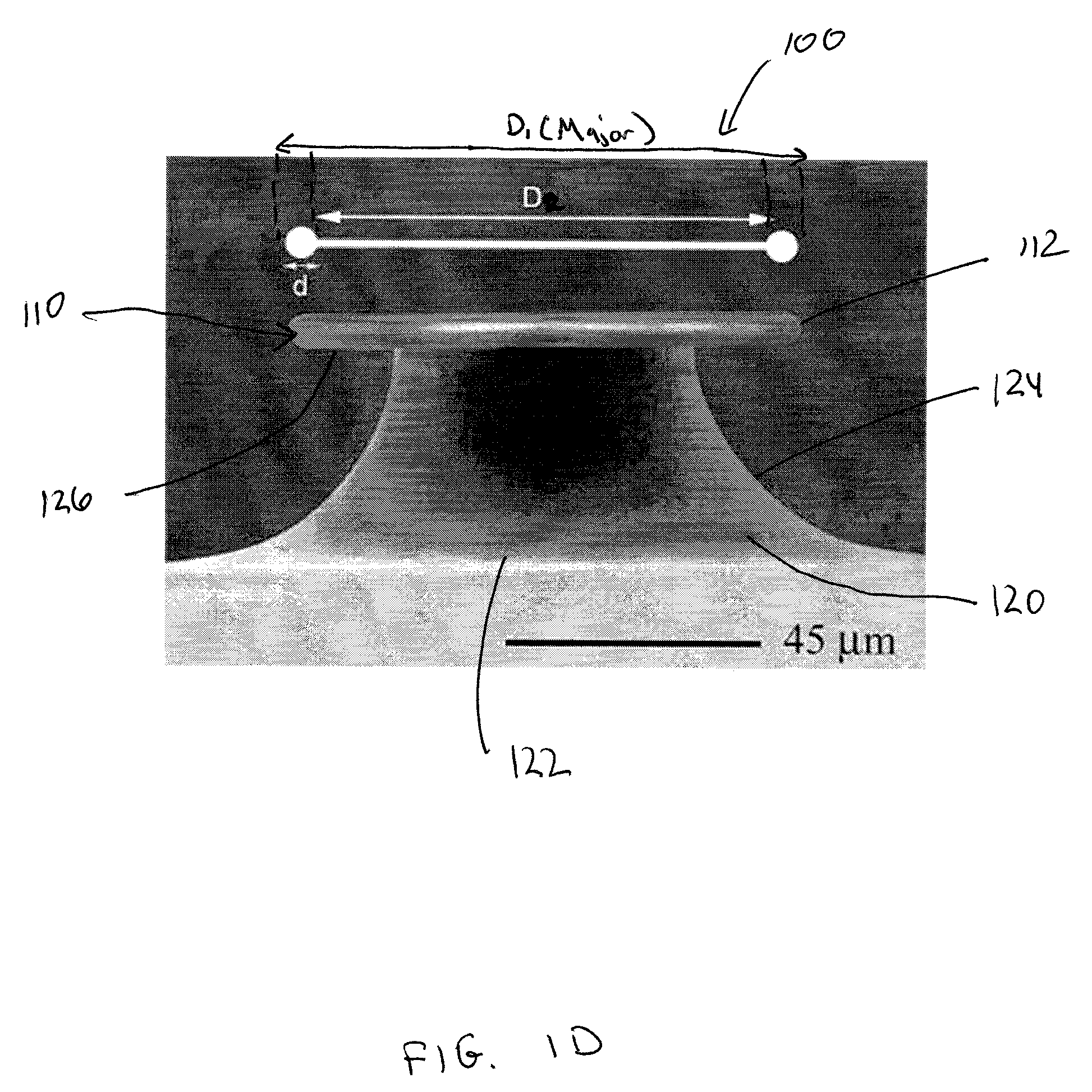Biological and chemical microcavity resonant sensors and methods of detecting molecules
a biological and chemical microcavity and resonant sensor technology, applied in the direction of material analysis using wave/particle radiation, instruments, active medium materials, etc., can solve the problems of not being able to blindly detect the target molecule by label, requiring prior knowledge, and requiring additional data processing. , to achieve the effect of enhancing sensitivities
- Summary
- Abstract
- Description
- Claims
- Application Information
AI Technical Summary
Benefits of technology
Problems solved by technology
Method used
Image
Examples
Embodiment Construction
[0082]Embodiments of a microcavity resonator. According to one embodiment, microcavity resonators are capable of ultra-high Q values. Another embodiment is directed to a method for fabricating an ultra-high Q microcavity resonator. The described microcavity and method provide ultra-high Q values that can be fabricated using known semiconductor and wafer processing techniques and equipment. Micro-cavities of embodiments of the invention can be fabricated in a time and cost effective manner and can also be integrated with other planar components and systems that are produced with planar fabrication techniques and equipment.
[0083]Embodiments of a microcavity resonant sensor. Micro-cavities, including toroid-shaped ultra-high Q microcavity embodiments, can be used as biological, chemical, and biochemical sensors. According to one embodiment, embodiments are capable of identifying specific molecules with enhanced sensitivity so that a small number of molecules and even a single molecule ...
PUM
 Login to View More
Login to View More Abstract
Description
Claims
Application Information
 Login to View More
Login to View More - R&D
- Intellectual Property
- Life Sciences
- Materials
- Tech Scout
- Unparalleled Data Quality
- Higher Quality Content
- 60% Fewer Hallucinations
Browse by: Latest US Patents, China's latest patents, Technical Efficacy Thesaurus, Application Domain, Technology Topic, Popular Technical Reports.
© 2025 PatSnap. All rights reserved.Legal|Privacy policy|Modern Slavery Act Transparency Statement|Sitemap|About US| Contact US: help@patsnap.com



